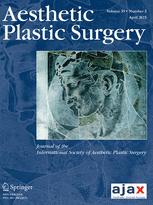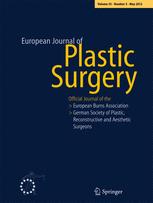Veronesi, P; De Lorenzi, F; Loschi, P; Rietjens, M; Veronesi, U.
Aesthetic Plastic Surgery, February 2016, pp 1-10
 Breast augmentation is the most common cosmetic surgery in the United States, and thousands of augmented patients develop breast cancer each year. The possible effects of implants on cancer incidence, diagnosis, and treatment usually generate a disarming confusion. The present paper represents an update of the more recent oncologic and surgical strategies, aiming to support plastic and general surgeons in such challenging aspects. Several aspects of breast cancer management in augmented women are investigated, including: risk estimation and cancer characteristics, cancer diagnosis and cancer treatment including breast conservation, intraoperative radiotherapy, sentinel node biopsy and mastectomy, and reconstruction.
Breast augmentation is the most common cosmetic surgery in the United States, and thousands of augmented patients develop breast cancer each year. The possible effects of implants on cancer incidence, diagnosis, and treatment usually generate a disarming confusion. The present paper represents an update of the more recent oncologic and surgical strategies, aiming to support plastic and general surgeons in such challenging aspects. Several aspects of breast cancer management in augmented women are investigated, including: risk estimation and cancer characteristics, cancer diagnosis and cancer treatment including breast conservation, intraoperative radiotherapy, sentinel node biopsy and mastectomy, and reconstruction.
 Autologous fat transplantation is a promising technique for soft tissue augmentation. However, the long-term maintenance of fat grafts remains unpredictable. Based on Peer’s cell theory, techniques that cause less cellular damage will optimize graft integration. Water jet-assisted liposuction (WAL) was introduced as a gentle and efficient technique for harvesting a large volume of fat in a short period of time. In this study, we evaluated the viability and function of adipocytes and preadipocytes harvested using WAL and compared this with the Coleman technique.
Autologous fat transplantation is a promising technique for soft tissue augmentation. However, the long-term maintenance of fat grafts remains unpredictable. Based on Peer’s cell theory, techniques that cause less cellular damage will optimize graft integration. Water jet-assisted liposuction (WAL) was introduced as a gentle and efficient technique for harvesting a large volume of fat in a short period of time. In this study, we evaluated the viability and function of adipocytes and preadipocytes harvested using WAL and compared this with the Coleman technique.




 Sitio web publicado el
Sitio web publicado el
Los lectores comentan